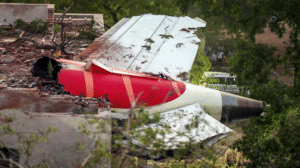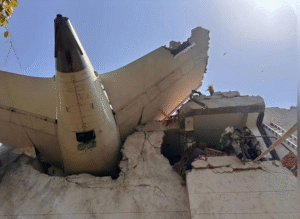On June 12, 2025, Air India Flight AI-171, a Boeing 787-8 Dreamliner, tragically crashed shortly after takeoff from Sardar Vallabhbhai Patel International Airport in Ahmedabad. The flight was a route to London Gatwick with 242 individuals on board. Only one passenger survived, while 241 others perished, marking this as the deadliest aviation disaster in India since the 1996 Charkhi Dadri mid-air collision.

Theories Under Investigation
As investigations continue, several theories have emerged regarding the cause of the crash:
1. Landing Gear Not Retracted
One prevailing theory suggests that the aircraft’s landing gear remained extended during the initial climb. This configuration would have significantly increased drag, reducing the aircraft’s ability to gain altitude and speed. Experts speculate that the crew may have failed to retract the landing gear promptly, a critical step in the take-off procedure.

2. Engine Failure
Another theory posits that the aircraft experienced engine failure shortly after takeoff. Flight data indicates a loss of engine power at approximately 625 feet altitude, leading to a rapid descent. Possible causes for the engine failure include bird strikes, fuel contamination, or mechanical issues. The aircraft’s design allows for single-engine operation, but a dual engine failure would have been catastrophic.

3. Improper Flap Configuration
Investigators are also examining whether improper flap settings contributed to the crash. Flaps are crucial for providing additional lift during takeoff. If the flaps were not deployed correctly, the aircraft may have lacked sufficient lift, leading to a stall and subsequent crash.
Additional Factors and Passenger Concerns
Prior to the crash, a passenger aboard the same aircraft from Delhi to Ahmedabad reported unusual occurrences. The individual noted potential technical issues and turbulence during the flight, raising concerns about the aircraft’s condition. These observations are now under scrutiny as part of the broader investigation.
International Involvement in the Investigation
Given the international nature of the flight, experts from the United Kingdom and the United States are collaborating with Indian authorities in the investigation. The UK’s Air Accidents Investigation Branch (AAIB) has deployed a team to assist in determining the cause of the crash. The involvement of these agencies underscores the global concern and the need for a thorough and transparent investigation.

Conclusion
The crash of Air India Flight AI-171 is a devastating tragedy that has prompted a comprehensive investigation into its causes. While several theories are being considered, including issues with landing gear, engine failure, and flap configuration, the exact cause remains undetermined. The involvement of international aviation experts and the collection of flight data will be crucial in uncovering the factors that led to this disaster. As the investigation progresses, it is hoped that lessons can be learned to prevent such tragedies in the future.



